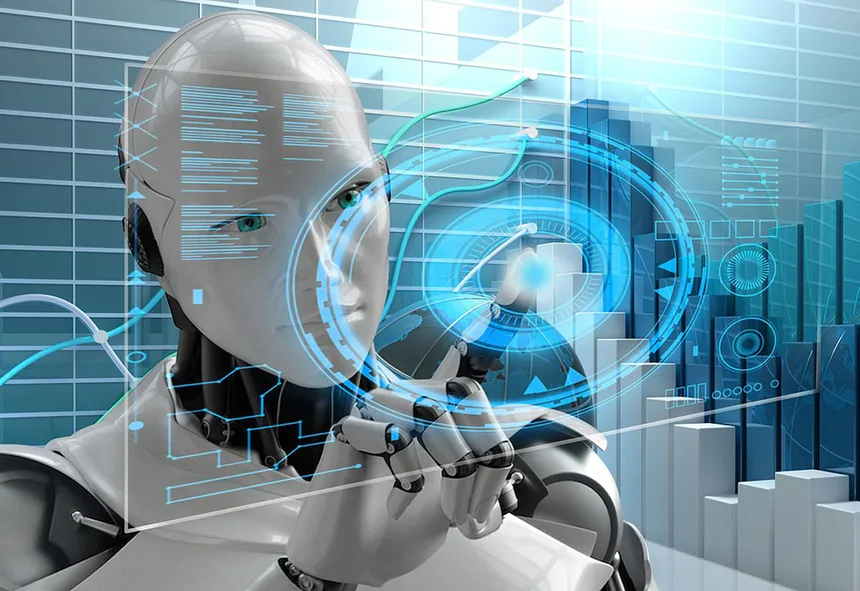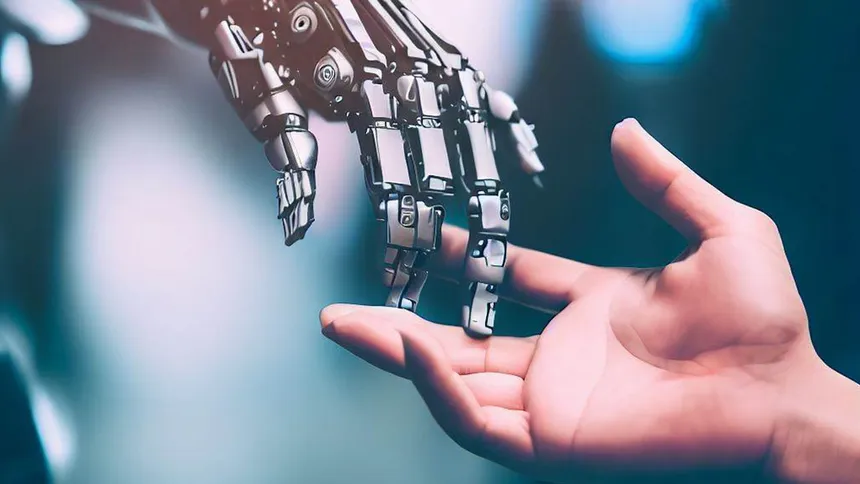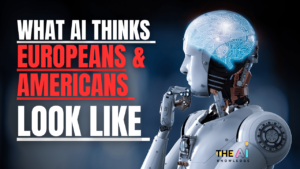Introduction
Are you curious about how the rest of the world perceives Americans’ physical appearances? Well, thanks to generative AI image models, we have some answers. In this blog post, we plunge into the consequences of an undertaking that requested that Europeans imagine what individuals from each American state resemble.
Follow us on Instagram: Follow Now
While the photos are not expected to be taken as full depictions of human experience, they shed light on the tendencies and speculations that exist inside man-made knowledge models. Here, we will go over these discoveries, discuss the verifiable setting of these generalizations, and take a gander at why tech and media should be more different and inclusive. So lock in, and prepare to have your assumptions tested and your curiosity provoked. What AI Thinks Europeans think Americans Look Like.
Table of Contents
Results of European perceptions of American physical appearance
As AI technology continues to advance, it’s become increasingly important to recognize its limitations and biases. Images generated by generative AI image models have highlighted the stereotypes and biases that currently exist within AI models. Buzzfeed recently asked AI to generate images of What AI Thinks Europeans think Americans Look Like from every state. The outcomes were amazing, most definitely. Results of European perceptions of American physical appearance: Each state’s image was created by generative AI image models. American culture’s biases and stereotypes are shown in these images. For example, Alabama was depicted as a farmer, while California was depicted as a Hollywood performer. The photos were not planned to be seen in a serious manner, yet rather as a talk on American endlessly culture.
Also read: QR Code AI Art Generator – Your Gateway to Innovative Digital Art in 2023
The conversation of normal generalizations and predispositions is significant in understanding what they mean for social discernments. For instance, Texans are depicted as cowboys, while Hawaiians are represented as Hula dancers in the generated images. These stereotypes limit our understanding of diverse cultures and overlook the nuances within each state’s unique identity. What AI Thinks Europeans think Americans Look Like is a clear example of how these biases can perpetuate misleading and oversimplified perceptions.
The impact of media and pop culture on these biases is also significant. Hollywood has heavily influenced our perceptions of California, while music has influenced our understanding of southern states like Tennessee. Popular media perpetuates these limited portrayals of American culture, leading to a lack of diversity and inclusivity in social perceptions. AI’s view of American looks, as demonstrated by What AI Thinks Europeans thin Americans Look Like, is a clear example of how these media-driven biases can shape our views.
Also read: 2pac AI Voice Generator Free Online 2023
The generative AI models’ overall output demonstrates the need for a deeper comprehension of American culture and identity. We should perceive the predispositions and generalizations that exist in our way of life and endeavor towards a more comprehensive and various society. In doing as such, we can separate these generalizations and make a more precise depiction of the American public. What AI Thinks Europeans think Americans Look Like is a significant reminder of the importance of challenging and evolving our perceptions.
Criticism and controversy around the project
The use of generative AI image models has created a stir in the tech world. These models provide a glimpse into how stereotypical biases can be embedded into artificial intelligence. Recently, BuzzFeed created images depicting the physical appearance of Americans from all 50 states, as per European perceptions, using generative AI image models. The undertaking planned to reveal insight into these inclinations and how they can propagate hurtful generalizations. Notwithstanding, the undertaking was likewise met with analysis and contention. AI’s view of American looks, as demonstrated by What AI Thinks Europeans think Americans Look Like, is a pertinent example of the complexities surrounding AI-generated perceptions.

Criticism and controversy around the project:
The images that were created using generative AI image models have received criticism for being inaccurate and harmful. The AI models were trained on datasets that primarily consisted of Caucasian faces, which led to images portraying people of color in a stereotypical and negative light. This has prompted allegations that the venture builds up racial inclination, bias, and separation. Accordingly, many individuals have communicated shock and worry over the undertaking’s suggestions. What AI Thinks Europeans think Americans Look Like underscores the importance of addressing these issues and working towards more equitable AI representations.
Also read: Oxolo AI: A Revolutionary Leap in Video Generation in 2023
Specialists in the field of simulated intelligence have likewise reprimanded the undertaking, guaranteeing that depending exclusively on computer based intelligence calculations to portray actual appearance and social discernment is certainly not a solid technique. They state that such a strategy isn’t comprehensive or different enough to represent the heap of viewpoints and encounters that exist inside human culture. What AI Thinks Europeans think Americans Look Like reinforces the need for a more nuanced and multifaceted approach to AI representation.
AI’s view of American looks – What AI Thinks Europeans think Americans Look Like
Alternative methods of studying social perceptions include using surveys and interviews of people belonging to diverse backgrounds. The responses gathered from these methods provide a much more realistic and nuanced perspective on social perception, rather than relying on AI models, which can perpetuate harmful stereotypes.
In conclusion, while the use of generative AI image models to study social perception is an innovative concept, it is vital to acknowledge its limits and potential to perpetuate harmful stereotypes. What AI Thinks Europeans think Americans Look Like serves as a cautionary tale for AI model users to constantly question their assumptions and biases. To push ahead, we should be proactive in encouraging variety, inclusivity, and moral contemplations in every aspect of tech and media to guarantee reasonableness and uniformity for all.
Historical context of European perceptions of American physical appearance
European perceptions of American physical appearance have been shaped by a long history of colonization and physical stereotypes. Europeans have frequently held preconceived notions regarding the physical characteristics of individuals from various regions. Slavery, migration, and the civil rights movements in America have all had an impact on these perceptions.
For example, slaves were frequently portrayed as having actual distortions like huge lips, unusual hair and level noses. They were dehumanized and their enslavement justified by these stereotypes. What AI Thinks Europeans think Americans Look Like underscores the enduring influence of historical biases on contemporary perceptions.
Likewise, in the nineteenth and mid twentieth hundreds of years, there was a prevalent view that individuals from specific European nations were more truly alluring than others. This conviction depended on pseudoscientific hypotheses that connected actual elements with insight, profound quality, and economic wellbeing.
Such ideas have persisted till this day in various forms. For instance, the stereotypes of southern people having an extremely thick accent is a common perception even today. What AI Thinks Europeans think Americans Look Like demonstrates the enduring influence of historical biases on contemporary perceptions and how AI can both reflect and challenge these biases.
These inclinations and speculations have been developed by the media and standard society all through the long haul. These pessimistic generalizations are much of the time sustained by how individuals from different districts are portrayed in motion pictures, TV programs, and different types of media. The discourse on social media platforms has also perpetuated these negative stereotypes, further fueling the hatred in some instances. What AI Thinks Europeans think Americans Look Like highlights how AI can uncover and challenge these deep-seated biases in media and societal perceptions.
In conclusion, it is important to understand that the perceptions of physical appearance are not only impacted by the individual’s personal bias but historical and sensationalized perceptions also play a huge role. We need to create more awareness and educate ourselves on the true nature of people from varying regions and break down stereotypes and biases to avoid further perpetuation. What AI Thinks Europeans think Americans Look Like underlines the need for a more informed and unbiased understanding of people from diverse backgrounds.
Future implications and the need for change

Future implications and the need for change:
As seen from the results of the generative AI models, the biases and stereotypes that exist within the technology can have detrimental implications for society. The rapid development of AI technology necessitates considering the ethical implications of its use. This venture raises concerns about the requirement for additional examination, responsibility, and straightforwardness in artificial intelligence technology advancement. It is urgent to wipe out or decrease the inclinations that as of now exist within artificial intelligence models, which intensify prior biases and generalizations. What AI Thinks Europeans think Americans Look Like underscores the critical need for addressing and mitigating biases in AI to ensure fair and equitable outcomes.
What AI Thinks Europeans think Americans Look Like – AI’s view of American looks
The media and tech industries play a critical part in promoting diversity and inclusivity. There should be more representation in media and advertising of various races, abilities, and body types to promote tolerance and combat stereotypes. Furthermore, tech enterprises need to focus on diversity and inclusivity in their hiring practices and work towards making artificial intelligence models that more accurately represent diverse communities. What AI Thinks Europeans think Americans Look Like emphasizes the importance of these actions in addressing biases and promoting fairness in AI and media.
Media and education must be used to educate people in order to reduce stereotypes and bias in society. It is similarly vital to challenge and face generalizations and predispositions where they happen in day-to-day existence. Individuals can figure out how to perceive and challenge their inclinations, which will add to breaking down stereotypes and promoting inclusivity. What AI Thinks Europeans think Americans Look Like serves as a reminder of the importance of this ongoing effort to confront and dismantle biases in society.

All in all, man-created knowledge innovation might possibly reshape our reality, and it at last relies upon us to guarantee that it does as such in a capable and moral way. We ought to perceive and face the inclinations that exist inside man-made reasoning innovation to advance inclusivity, variety, and decency. In doing so, we can ensure that AI works to enhance human existence rather than perpetuate harmful stereotypes and bias. What AI Thinks Europeans think Americans Look Like serves as a reminder of the importance of this ongoing effort to steer AI technology in the right direction.
Conclusion
Takeaways from the project results reveal the depth of biases and stereotypes that exist within generative AI image models. What AI Thinks Europeans think Americans Look Like These portrayals, while not precise, shed light on how European impression of actual appearance can be formed by media and mainstream society. The subsequent reactions and debates around the task feature the requirement for variety and inclusivity in media and tech businesses, and the significance of moral contemplations in artificial intelligence advances. Pushing ahead, making strides towards separating these generalizations and inclinations to make a more fair and comprehensive society is significant.

10 thoughts on “The Fascinating Insights: What AI Thinks Europeans Think Americans Look Like”